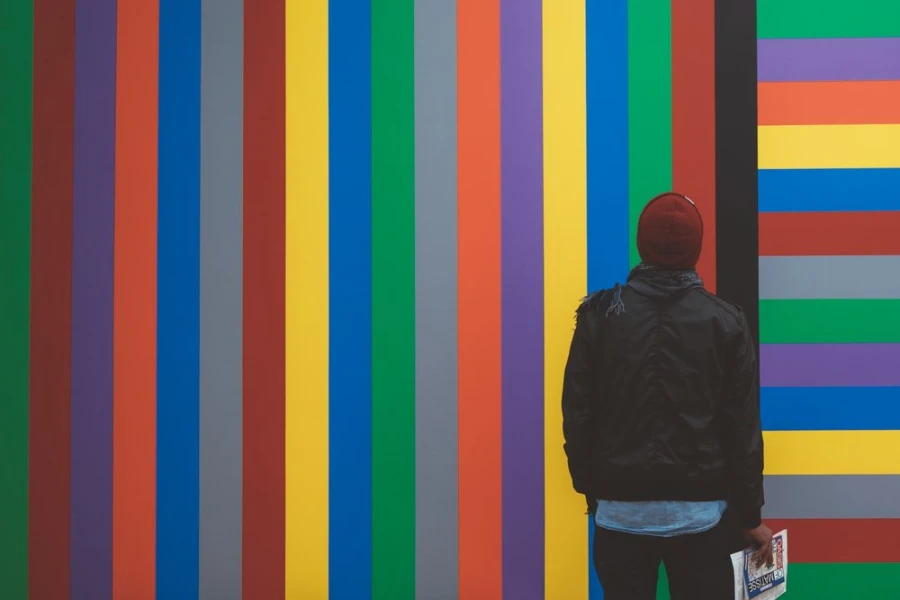“Mere color, unspoiled by meaning, and unallied with definite form, can speak to the soul in a thousand different ways.”
― Oscar Wilde
Colors help you to remember objects, play a role in influencing your purchasing decisions, and spark an emotional response to almost everything that you do. Studies show us that the unison of light and color can affect your mood, sleep cycle and patterns, heart rate, and well-being.
If you use color theory effectively, then it becomes the most powerful tool you can wield as a designer. Colors can speak volumes in fractions of seconds.
They can set a mood, convey emotion, incite physiological reactions, and even inspire people to take action. If you can harness the right color emotion to tell a client’s story, it can have an amazing effect.
The correct color can even influence the effectiveness of pills you take or the placebos they induce. For instance, blue is most commonly used for calming or sleeping pills, whereas red or yellow is used for stimulants.
A color is an important tool in a designer’s arsenal. More so because based on research, due to the psychological influence of color on human behavior, customers form up an opinion of a product in 90 seconds, and 9/10 times color influences this opinion.
Color Psychology

Image: Robert Katzki on Unsplash
Color psychology is the study of the relationship between color and behavior and aims to determine how color affects your daily decisions. Does the color of a dress compel you to buy it? Why do you choose one brand over another? Does the color of an icon make it more likely to click? The short answer is yes.
The why part is a little more complicated. Why you prefer certain colors over others can have an impact on our perception of them. The same color can also have different meanings depending on our upbringing, gender, location, values, and other factors.
What do the colors mean?
Warm Colors

Colors such as red, yellow, orange, and tertiary variations of these colors are called warm colors.
These colors make you feel safe and secure when you’re surrounded by them. They give you the illusion of heat, remind you of summertime, and seeing the hues from a warm color range can remind you of fun in the sun.
In the advertising space, warm shades bring up a sense of urgency, to reel you in quickly and prompt you to take action.
Red
Red is a powerful color desired by consumers, mostly used in advertising to inspire courage to take action. Red is also most commonly associated with power, attraction, and sensuality.
Yellow
Yellow is a color of well-being and inspires a good mood. It’s a color that can create positive feelings of optimism, joy, and happiness. It can, however, also have a different use case such as insecurity, resentment, or falsehood.
Orange
Orange is a color of energy. It inspires persuasion, motivation, and self-confidence. Thinking of oranges can bring to your mind the reminder of fruit or energy drinks that taste equal amounts of sweet and sour. Orange also has a sexual tone to it.
Cool Colors

Colors such as blue, purple, green, and tertiary variations of these colors are called cool colors.
These colors are widely associated with great outdoors, but ironically perform the best when used in the context of compact spaces. Cool hues from this color range can make areas feel larger than they actually are.
These colors can help eliminate the toxicity induced by feelings of stress, anxiety, and worry.
Blue
Blue is the color of inspiration and incites feelings of serenity, relaxation, confidence, success, loyalty, depth, and professionalism. It’s one of the colors that have the largest success amongst consumers. This is why it’s widely used by different brands and companies.
Purple
Purple is believed to be a color of faith, which is why many kings in the past have used it to appear as an authoritative figure. This color is widely used in the beauty industry as well as in luxury products. It comes with both positive and negative connotations from wisdom and temperance to loneliness and conformism.
Green
Green has been associated with friendship, freshness, life, health, and freshness despite the history of transmitting anxiety and anguish. There was a time green represented poison but in modern video games, it means life or health.
Neutrals

Neutral colors work as a functional backdrop and create a better effect in conjunction with brighter accent colors. Neutrals are often associated with sophistication. The major colors in this range are white, black, and gray.
White
The color can convey positive and negative feelings well. From the transmission of purity, light, and goodness to emptiness, coldness, and mourning.
Black
Black is universal in its usage, like white, and can create feelings of mystery, seriousness, and vigor. In the fashion industry, however, black can easily create a slimming effect which brands use to a heavy advantage.
Gray
Gray is a timeless color that is often misunderstood as dull, dirty, or dingy. But it’s actually more on the side of discipline, perseverance, and responsibility. Corporate designs, background, and typography are where you’ll see this color more commonly.
Conclusion
In the world of design, it’s more than just selecting colors, shapes, and sizes that look pleasing or aesthetic. A designer’s job is to also take into account psychological factors in order to incite a specific effect from the consumer. This requires a deeper understanding of what the colors mean, and how to use them strategically to create successful graphic design.









